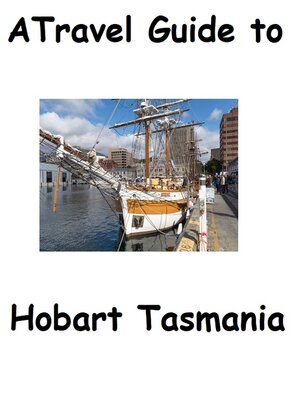
Sign up to save your library
With an OverDrive account, you can save your favorite libraries for at-a-glance information about availability. Find out more about OverDrive accounts.
Find this title in Libby, the library reading app by OverDrive.



Search for a digital library with this title
Title found at these libraries:
| Library Name | Distance |
|---|---|
| Loading... |
Hobart, the capital city of Tasmania, is a vibrant and picturesque city nestled between the slopes of kunanyi / Mount Wellington and the estuarine waters of the River Derwent. As Australia's second-oldest capital, founded in 1804 as a penal colony, Hobart boasts a rich tapestry of colonial history, maritime heritage, and a growing reputation for arts, culture, and gastronomy. With a population of around 250,000, it offers a unique blend of old-world charm and modern innovation, all set against a stunning natural backdrop.
One of the most striking features of Hobart is its preserved colonial architecture. Historic sandstone buildings line the streets of Salamanca Place, once the centre of Hobart's bustling whaling trade and now a hub for cafés, galleries, and the famous Salamanca Market. Nearby Battery Point retains the atmosphere of a 19th-century village, with narrow lanes and cottages that harken back to the early European settlers. These districts are not only tourist attractions but living communities that reflect the city's layered past.
Nature plays a central role in Hobart's identity. Towering above the city, Mount Wellington offers panoramic views and a playground for hikers and mountain bikers. The city's maritime character is reinforced by the River Derwent, which not only provides scenic beauty but is integral to the city's economy, supporting shipping, fishing, and a vibrant yacht culture. Hobart is famously the finish line for the annual Sydney to Hobart Yacht Race, one of the world's most challenging blue-water sailing events.
Culturally, Hobart punches well above its weight. The city has undergone a creative renaissance in recent years, spurred in part by the opening of MONA — the Museum of Old and New Art — in 2011. This bold, privately-funded museum showcases provocative contemporary and ancient works and has become a symbol of Tasmania's growing cultural confidence. Festivals like Dark Mofo, associated with MONA, transform the city each winter with installations, performances, and rituals that embrace Hobart's dark seasonal beauty.
Hobart is also renowned for its food and drink scene, strongly tied to the island's clean environment and local producers. From farm-to-table restaurants to boutique distilleries and wineries, the region emphasizes sustainability and quality. The Tasmanian seafood — especially oysters, abalone, and Atlantic salmon — is world-class, and local markets provide a rich showcase of the state's agricultural bounty.
While Hobart retains a relaxed and intimate feel, it also grapples with the challenges of popularity. Tourism and interstate migration have driven up housing costs and placed pressure on infrastructure, prompting debates about sustainability and the city's future identity.
In sum, Hobart is a city of contrasts: small yet culturally significant, historic yet forward-looking, remote yet increasingly connected. Its charm lies in this very balance — a city that honors its past while embracing change, all in one of the most beautiful natural settings in the southern hemisphere.







